#common wasp
Explore tagged Tumblr posts
Text

Animal Coloration: An Account of the Principal Facts and Theories Relating to the Colors and Markings of Animals. Written by Frank E. Beddard. 1895.
Internet Archive
#amphibians#salamanders#fire salamander#bugs#insects#moths#cinnabar moth#beetles#wasp beetle#wasps#common wasp
408 notes
·
View notes
Text

Common Wasp/vanlig geting. Värmland, Sweden (September 3, 2016).
118 notes
·
View notes
Text
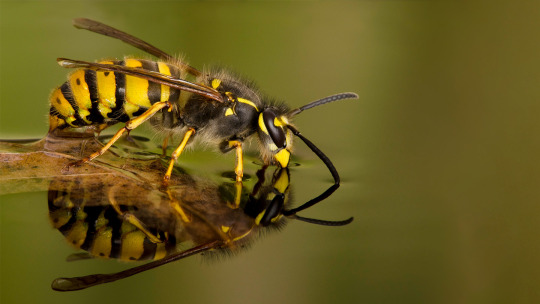

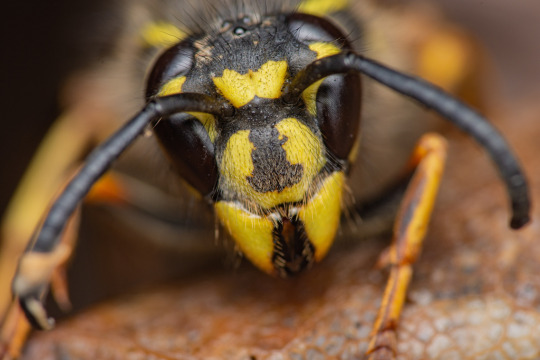
Wonder Common Wasps
The common wasp, Vespula vulgaris is a species of wasp that is native throughout Europe and Asia, and has been introduced in New Zealand, Australia, and South America. These wasps thrive in a variety of environments, from deciduous forests to meadows to urban parks and gardens; the primary requirements are an abundant source of food and at least several months where the temperature is above 2 °C (36 °F) which allows them to forage. Nests can be found in tree hollows, crevices, wall cavities, or any other enclosed space.
Vespula vulgaris has a highly varied diet. As larvae, they are fed pre-chewed caterpillars, flies, spiders, and bees. Adults consume more sugary foods like nectar, fruits, and honey. They find these foods through their extremely sensitive sense of smell; the common wasp is capable of detecting minute particles of food via their antennae, and once a source of food is found the individual will return to the hive to recruit others by drumming their abdomen against the side of the nest.
Like other hymenoptrids, the common wasp is a eusocial species; each nests consists of workers under the direction of a single queen. When a queen first begins her colony, she does most of the work building the nest from chewed wood fibre and laying eggs that produce sterile female workers. As the colony grows, reaching up to 5,000 individuals, the queen begins to produce both female and male workers, each of which performs a specific task for the hive; foraging, caring for the eggs and larvae, feeding the queen, or repairing the nest. These workers are directed by pheromones released by the queen, which is delivered both by air and when workers lick the queen to clean her.
The queen begins laying eggs at the start of summer, in May. Larvae emerge about 5 days later, and spend the next 20-25 days being fed by the queen until they reach full size, at which time they spin a mucus-based cover over their cell and emerge as a mature worker. This cycle continues throughout the summer and early fall, with larger individuals emerging later in the season. A larva's place in the hive also determines its size; the largest larvae, which becomes the queen, is located at the bottom of the nest closest to the entrance. Multiple queens typically hatch in a season, but most leave the nest to start their own colonies. Towards the end of the summer, the queen mates with multiple males and then enters a state of hibernation until the following spring thaw; meanwhile, the workers either starve or are killed by the cold.
Workers and queens are fairly similar in appearance; both sport yellow and black markings across their thorax and abdomen to warn away potential predators. The primary difference is that queens are larger, at 20 mm (0.8 in) long, while workers are only 12–17 mm (0.5–0.7 in). Only female workers have stingers. The species is commonly confused with the European wasp, Vespula germanica, as the two look remarkably similar; the best identifier is that V. vulgaris has only one black mark on its head, while V. germanica has three.
Conservation status: This species has a large, stable population and is considered Least Concern by the IUCN. However, in areas where it has been introduced, it is considered invasive due to predation and competition with native species.
If you like what I do, consider leaving a tip or buying me a ko-fi!
Photos
Andy Sands
Mike Snell
Dennis Maraisis via iNaturalist
#common wasp#Hymenoptera#Vespidae#social wasps#paper wasps#wasps#hymenoptrids#insects#arthropods#deciduous forests#deciduous forest arthropods#grasslands#grassland arthropods#urban fauna#urban arthropods#europe#asia#animal facts#biology#zoology
92 notes
·
View notes
Text
@toadsong submitted: Today's bug(s) are some very curious red velvet ants (Dasymutilla occidentalis) sniffing about!
Velvet ants are so so so good. Spiritually I am kissing these ladies
559 notes
·
View notes
Text

Common Thread-waisted Wasp (Ammophila procera)
July 15, 2024
John Heinz National Wildlife Refuge, Tinicum, Pennsylvania
I've said it before, but I hate finding some cool new-to-me bug and finding out it has the word "common" in its name.
#bug#bugs#photographers on tumblr#Ammophila procera#Common Thread-waisted Wasp#bugblr#entomology#insects#insect#nature#wildlife photography#animals#wasp#wasps#hymenoptera
135 notes
·
View notes
Note
Is there a fish you don't like or even dislike?
Hmm, good question! I don't really dislike any fish, not even species that are invasive in some places, since that's hardly their fault (and invasive fish are native somewhere). I suppose there's fish that I don't like in the sense that I actively do not have any opinions on them. They exist in my mind but I don't really think about them individually (nor have very many positive emotions about them individually), while I like all fish as a whole!
Sometimes I do get annoyed with fish, or rather, people. There's certain fish that get a lion's share of people's attention, and I feel that's unfair! I don't like that some animals are entirely disregarded in favour of others, when there's a whole world of wonderful and loveable creatures. It makes me feel like I hate some animals (fish too) that I see over and over and over again, because I'm like, "okay okay we get it, but what about all these other guys, huh???" but in reality I don't, actually. I only dislike that disproportionality!
#im not naming any animals but perhaps you can infer common internet and fishblr patterns#i dont really know why but in my brain i expect that love for a thing should be proportional to the abundancy of a thing#i dont really mean like. that most peoples fave animal SHOULD be an ant or a bristletooth or a wasp or a beetle#but rather that people would appreciate those whole groups more. talk about them more. love them more#perhaps it is hypocritical of me because my favourite animal is a sturgeon and i post about them all the time. i should be wormytimes lol#no no no wait! i should be bacteriatimes.... how animalcentric of me. please forgive me bacteria living on and inside me#anyway. like i said in reality i really love those super popular animals too#they are popular for a reason! they are the coolest and badassest and prettiest beasts#but then it gets tricky when i also think other beasts are the coolest and badassest and prettiest too and theres zero fanfare for them :((#asks#mc2bp
35 notes
·
View notes
Text

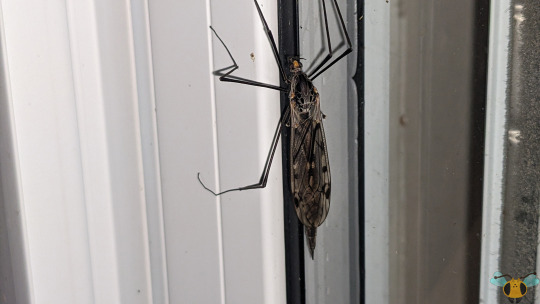







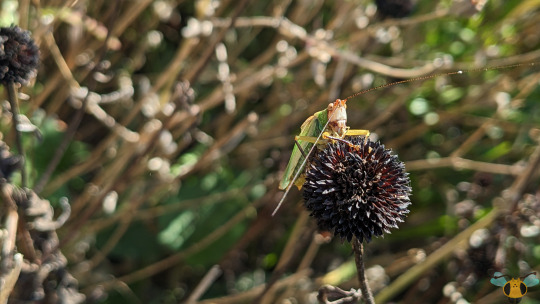
Insect Highlights of 2024
With the new year celebrations scheduled for this weekend, I thought it best to share some of my favorite insect specimens from this year, rather than one single typed of insect. The pictures here haven't been uploaded to the blog in a post, so today they can all share the spotlight. There are many familiar faces here and all of them are incredible and beautiful creatures. Hopefully there are even more insect delights and finds to enjoy in the upcoming year. To ring in the new year, we have the following insects:
Four-Spotted Skimmer - Libellula quadrimaculata - Order Odonata (May 24th)
Giant Crane Fly - Tipula metacomet - Order Diptera (September 16th)
Spring Fishfly - Chauliodes rastricornis - Order Megaloptera (May 27th - from Muskoka)
Milkweed Aphids - Aphis nerii - Order Hemiptera (September 3rd - alongside German Yellowjackets)
Oil Beetle - Meloe campanicollis - Order Coleoptera (October 21st)
Fall Webworm Caterpillars - Hyphantria cunea - Order Lepidoptera (July 25th)
Great Golden Digger Wasp - Sphex ichneumoneus - Order Hymenoptera (July 1st)
European Earwig - Forficula auricularia - Order Dermaptera (September 21st)
Common Red Soldier Beetle - Rhagonycha fulva - Order Coleoptera (July 1st)
Black-Legged Meadow Katydid - Orchelimum nigripes - Order Orthoptera (October 27)
All pictures here were taken in 2024 with a Google Pixel 4.
Wishing everyone a Happy New Year and a marvelous 2025! Thank you everyone for making this another beautiful year of insect observations! I hope to reach even more of you this year with many more wonderful insect pictures and videos. Enjoy your celebrations!
#jonny’s insect catalogue#yearly insect highlights#ontario insect#fly#dragonfly#fishfly#earwig#caterpillar#katydid#aphid#beetle#wasp#toronto#giant crane fly#four spotted skimmer#tipula metacomet#spring fishfly#milkweed aphid#oil beetle#fall webworm moth caterpillar#fall webworm caterpillar#great golden digger wasp#european earwig#common red soldier beetle#black legged meadow katydid#happy new year#happy new year 2025#2024
20 notes
·
View notes
Text

Climaciella
“Climaciella brunnea, wasp mantidfly, ID Confidence: 92” - via Wikimedia Commons
#climaciella#climaciella brunnea#nature#insects#wasp mantidfly#mantidfly#wikipedia#wikipedia pictures#wikimedia commons#arthropoda#insecta#arthropods#neuroptera#mantispidae#mantispinae#entomology#bugs
28 notes
·
View notes
Text

Common Thread-waisted Wasp
After paralyzing this moth caterpillar the Common Thread-waisted Wasp provisioned its nest with the victim.
15 notes
·
View notes
Text
Lawyering through fandoms: The four types of common law murder
1) Frank Castle / The Punisher shoots a criminal because he wanted to. It was not out of self-defense and Frank had time to think about it. Intent-to-kill murder.
2) Matt Murdock / Daredevil beats up a criminal with his sticks until the poor bloke goes unconscious. Unbeknownst to Matt, the guy ended up dying in the hospital due to the several blows he took to the head. Grievous bodily harm murder.
3) Party!Thor Odinson decides to hold another party in Midgard. On a dare, he sends a bolt of lightning at a random passing car. The lightning was supposed to miss since Thor only meant to scare the person. Instead, the lightning directly hit the car and electrocuted the person to death. Depraved heart murder (or reckless murder).
4) Scott Lang takes part in a burglary, specifically to steal the Ant-Man suit from the Pyms. During the course of the robbery/burglary, he unintentionally scares Hank and Hope’s live-in maid. The maid has a sudden heart attack and dies instantly. Felony-murder.
#lawyering#lawyer#law school#law#legal stuff#common law#marvel#mcu#nmcu#netflix marvel#frank castle#the punisher#daredevil#matt murdock#thor odinson#thor#what if#what if...?#party thor#marvel what if#scott lang#ant man#antman and the wasp#hank pym#hope van dyne#hope pym#marvel stuff#mcu stuff#legalese#fandom stuff
22 notes
·
View notes
Text
i bring a certain kind of "there is no line separating white people's genes from non white people's genes" that racists hate
7 notes
·
View notes
Text


Tiny mighty beast and her prey. These wasps are leafhopper specialists, kind of like the relationship between cicadas and cicada killers, but with much smaller animals
(Alysson oppositus, 7/23/2024)
#bugs#bugblr#hymenoptera#wasps#crabronidae#no common name even though ‘leafhopper wasp’ or ‘leafhopper killer’ is Right There#predation
10 notes
·
View notes
Text

Polistes dominula on Achillea millefolium / European Paper Wasp on Common Yarrow at Confluence Park in Denver, CO
#Polistes dominula#Polistes#vespidae#Achillea millefolium#Achillea#Asteraceae#European Paper Wasp#Paper Wasp#Wasp#Common Yarrow#Yarrow#Insects#Plants#Flowers#Nature photography#photography#photographers on tumblr#Confluence Park#Denver#Denver CO#denver colorado#Colorado#🌺🌻
9 notes
·
View notes
Text



@earthandsunandmoon submitted: Sharing some of my favorite bug friends of July! A green june beetle, mantis nymph, and a dark paper wasp.
I want to give them all a little kiss but especially the wasp. What beautiful eyes he has!
#animals#insects#bugs#submission#praying mantis#mantid#wasp#Polistes#beetle#green june beetle#common green june beetle#Cotinis#scarab beetle
181 notes
·
View notes
Text
I'm sorry but peak femininity is not a thin hourglass shape just like how peak masculinity shouldn't be 8 packs. That's unnatural
#rectangle shaped torso with iliac crest protruding.. peak#no disrespect to my roomie who likes waists but a thin waist is an insectoid feature. wasp like#it's not a feature common on humans
6 notes
·
View notes
Note
wait wait wait wait wait is praying mantises on your list of liked bugs I need to know
YESS!! I THINK THEY'RE VERY COOL!!
I don't think I know a whole lot about them, but they're great, I love how it looks like they have pupils
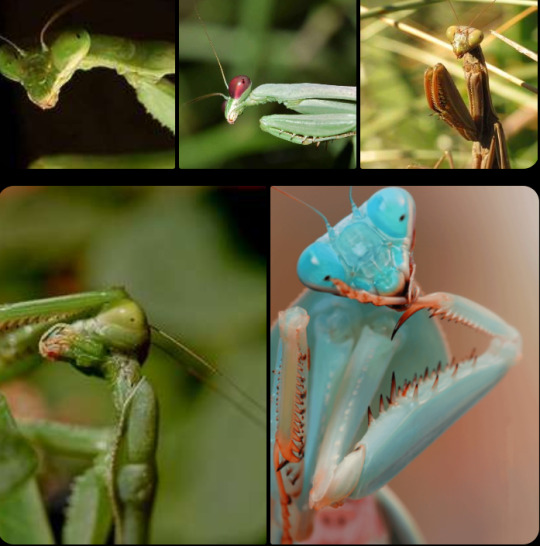
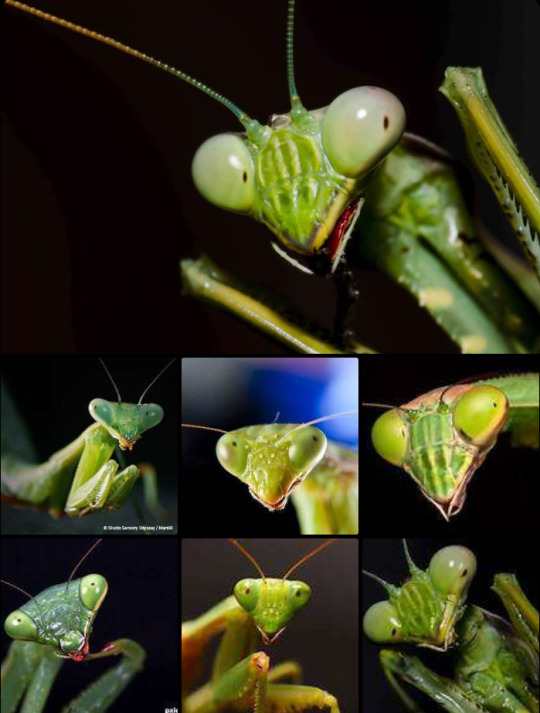
Heres A collection of of photos the little drama queens I found a while ago (screenshotted from the discord channel I put them in)
My sona was originally based off of them, but since then I've taken inspiration from other insects (I sadly don't have any current photos of him, it's name is bug :3)
#The weird thing about knowing a lot about some stuff sometimes and being around people that know a lot about some stuff sometimes#Is that you could tell someone about something and they could know so much more than you about it#But then you could mention something you thought was common knowledge and someone will have never heard it before#Very off topic but also why I wasn't sure of how much I know#Not enough to info dump that's for sure 😔#Also i think it's pretty safe to say that I like most bugs#Including wasps I'm a fan of wasps#creature answers#They're very silly
18 notes
·
View notes